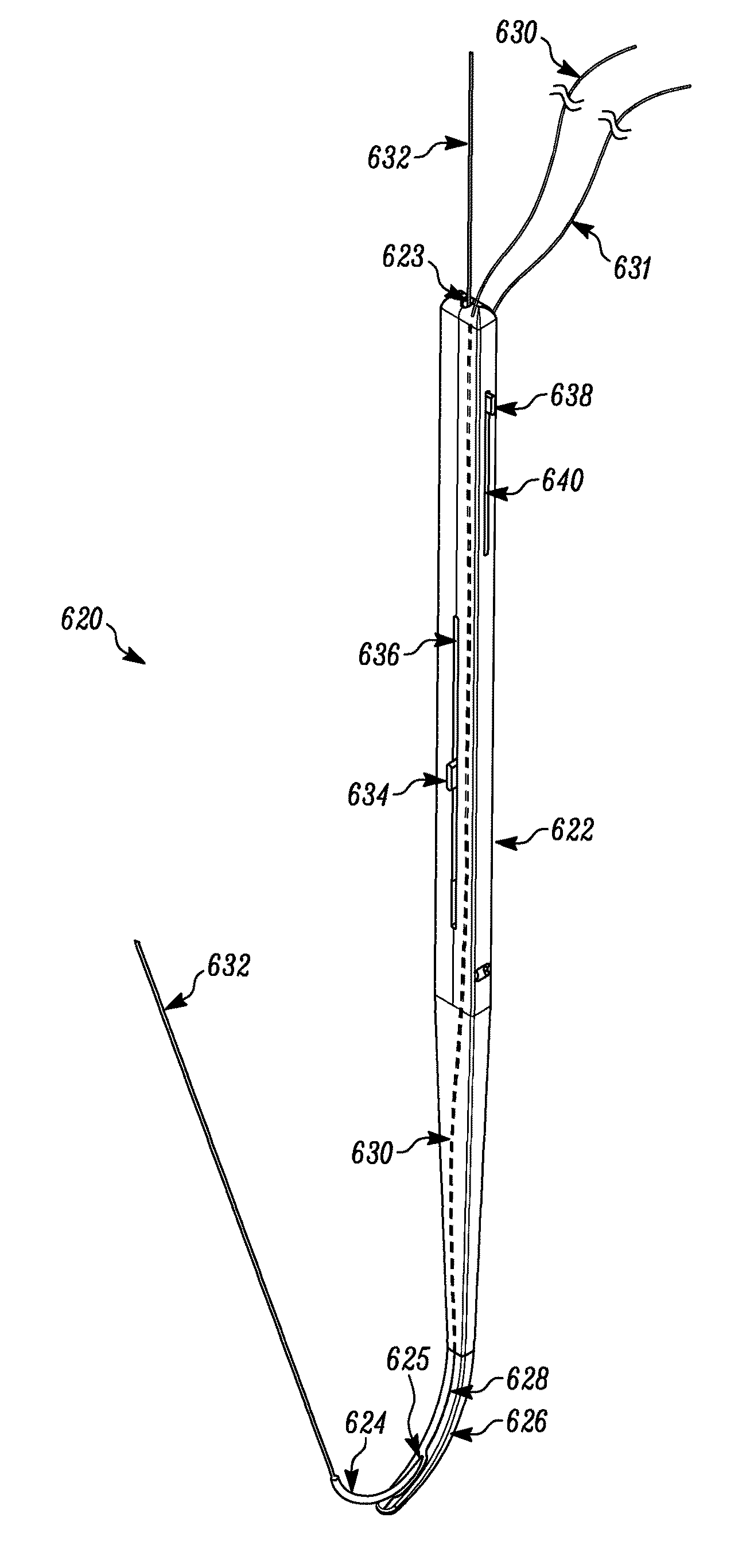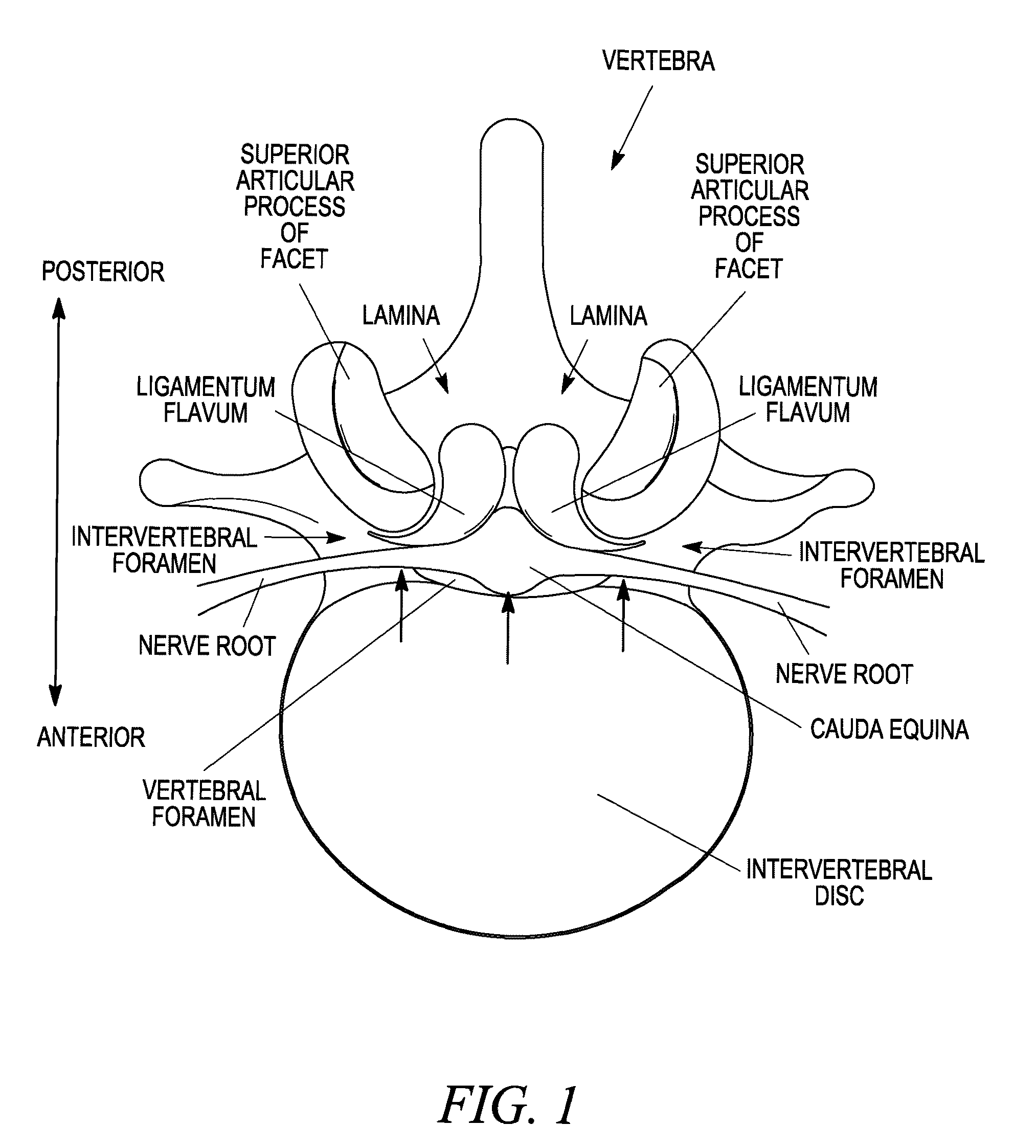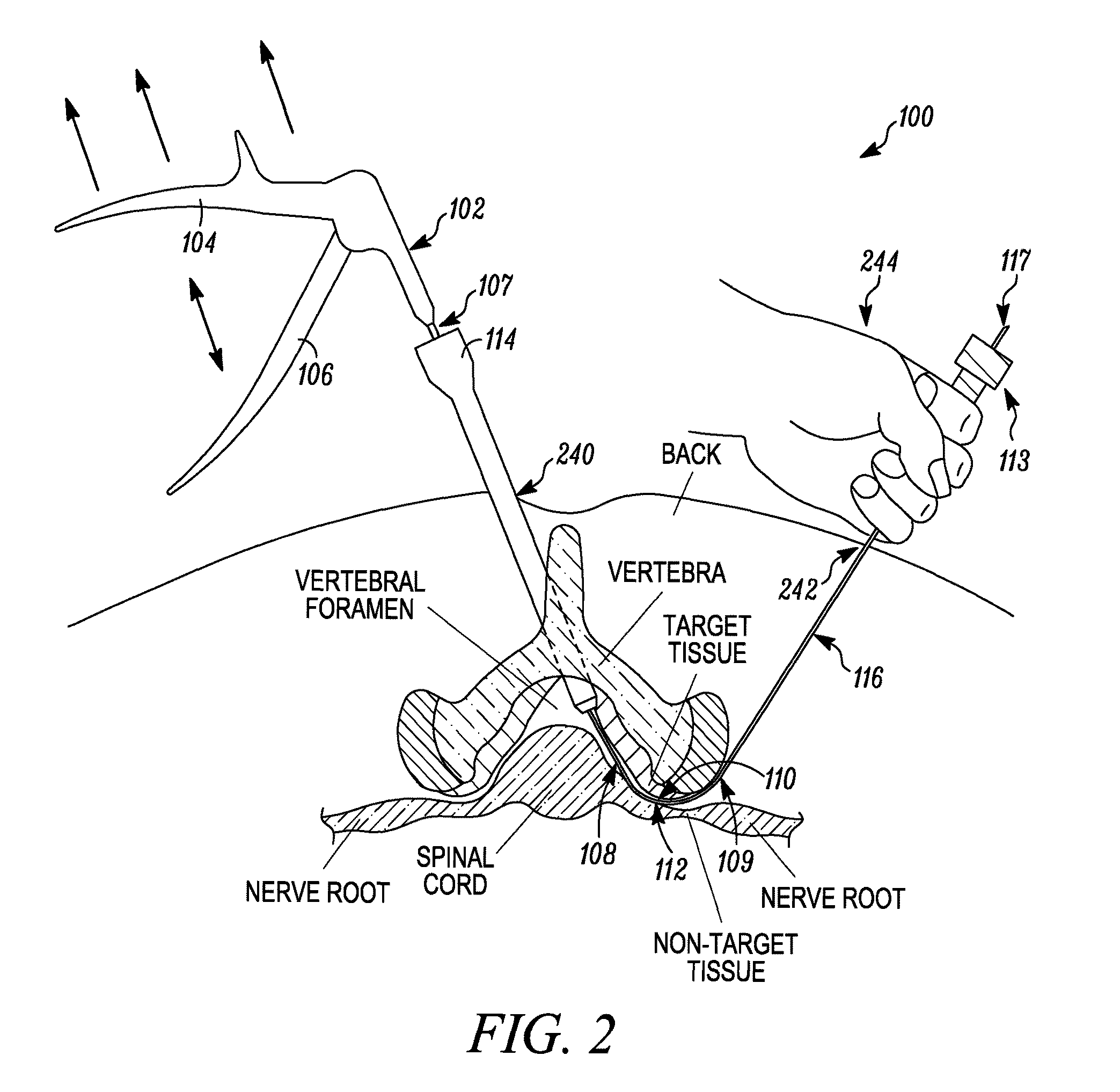Spinal access and neural localization
a technology applied in the field of spinal access and neural localization, can solve problems such as difficulty in seeing
- Summary
- Abstract
- Description
- Claims
- Application Information
AI Technical Summary
Benefits of technology
Problems solved by technology
Method used
Image
Examples
Embodiment Construction
[0080]Methods, apparatus and systems for modifying tissue in a patient are provided. Methods, apparatus and systems for spinal access and neural localization are also provided. Although the following description and accompanying drawing figures generally focus on tissue modification in spine, in various alternative embodiments any of a number of tissues in any of a number of anatomical locations in a patient may be modified.
[0081]Referring to FIG. 2, one embodiment of a tissue modification device 102 may include an elongate body 108 having a proximal portion 107 and a distal portion 109, a proximal handle 104 with an actuator 106 coupled with proximal portion 107, one or more tissue modifying surfaces or members 110, one or more tissue protective surfaces 112, a guidewire 116 coupled with the distal portion 109, and a distal handle 113 removably couplable with guidewire 116. (FIG. 2, as well as many of the subsequent Figures in this application, is not drawn to scale.) In various em...
PUM
 Login to View More
Login to View More Abstract
Description
Claims
Application Information
 Login to View More
Login to View More - R&D
- Intellectual Property
- Life Sciences
- Materials
- Tech Scout
- Unparalleled Data Quality
- Higher Quality Content
- 60% Fewer Hallucinations
Browse by: Latest US Patents, China's latest patents, Technical Efficacy Thesaurus, Application Domain, Technology Topic, Popular Technical Reports.
© 2025 PatSnap. All rights reserved.Legal|Privacy policy|Modern Slavery Act Transparency Statement|Sitemap|About US| Contact US: help@patsnap.com



